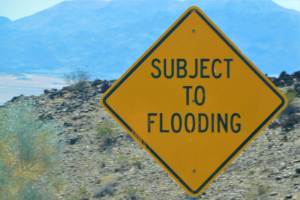Low-Cost, No-Cost Preparedness
 Disaster planning and preparedness is an important investment in a community’s resilience; however, some may defer this investment thinking that it will be costly. While disaster planning and preparedness efforts can be a significant expense, there are a variety of no-cost, low-cost measures available, proving disaster preparedness lies within reach of any budget.Getting ready for a natural disaster should be area-specific, influenced by a region’s risks, including earthquakes, wildfires, hurricanes, and flooding. Other preparations are universal and serve as preparedness basics. Below is a collection of no-cost disaster preparedness tips and resources that address a variety of disasters and will help improve community and individual resiliency.
Disaster planning and preparedness is an important investment in a community’s resilience; however, some may defer this investment thinking that it will be costly. While disaster planning and preparedness efforts can be a significant expense, there are a variety of no-cost, low-cost measures available, proving disaster preparedness lies within reach of any budget.Getting ready for a natural disaster should be area-specific, influenced by a region’s risks, including earthquakes, wildfires, hurricanes, and flooding. Other preparations are universal and serve as preparedness basics. Below is a collection of no-cost disaster preparedness tips and resources that address a variety of disasters and will help improve community and individual resiliency.
No-Cost Preparedness for Any Disaster or Location:
- Know what disasters and hazards could affect your area, how to get emergency alerts, and where you would go if you and your family need to evacuate. Access easy-to-understand resources to help you get started today, here.
- Download or order free preparedness products to help create your family emergency plan and prepare for the next emergency.
- Less than half of American families have a disaster communications plan. Follow this easy guide to create your family emergency communication plan.
- Sign up for your community’s warning system. Learn more about different emergency alerts, like Wireless Emergency Alerts (WEA), NOAA Weather Radio alerts, and the Emergency Alert System (EAS), here.
- Download the FEMA App for information on local alerts, preparedness tips, emergency planning, and how to find shelters near you.
- Document or take a video of household items that might need to be repaired or replaced in the event of a disaster.
- Review your home insurance or renter’s policy to see what disaster related expenses are covered.
- Practice emergency drills with your family annually.
- Know your zone. Understand evacuation routes to shelters or other pre-designated areas in case local authorities issue evacuation orders.
- Gather items already in your home that could be used to stock a disaster supply kit.
- Make sure everyone in your home knows how to use a fire extinguisher and knows where it is located.
- Review the CDC’s guidelines prior to visiting a public disaster shelter to understand new recommendations for sheltering during the COVID-19 pandemic.
Hurricanes or Severe Rainstorms
- Clear loose vegetation lying around the perimeter of your house. Remove dead branches or other potential projectiles from trees or yard debris to minimize the danger of flying objects during high winds. Contact your municipality to inquire about disaster preparedness related tree/limb removal services.
- Reinforce the underside of overhanging eaves of your house. Water from a severe storm or hurricane can enter through these points.
- Make sure that rain spouts and gutters are clear of debris or any backups to allow rain to flow away from your house.
- Make sure the exterior of chimneys and skylines are maintained and secure.
Flooding
- Know your flood risk. Visit FEMA’s Flood Map Service Center or check Floodmart.gov to know your neighborhoods level of flood risk.
- Plan evacuation routes away from flood sources such as rivers, lakes, and ocean fronts.
- When flooding is imminent or predicted, National Flood Insurance Program (NFIP) policyholders are eligible to receive up to $1,000 to purchase loss avoidance supplies such as tarps, sandbags, and more.
Earthquakes
- Practice Drop, Cover, and Hold On techniques with family and coworkers.
- Remove or secure hanging pictures or items and bookshelves, especially hanging items in bedrooms, kitchens, and living rooms.
- If you are near the coast, know where elevated refuge is and practice getting there in the event a tsunami follows an earthquake.
Wildfires
- Remove items around the exterior of your home that will fuel a wildfire, including wood piles, lawn furniture, barbecue grills, tarp coverings, etc. It is recommended that you create a 30 to 100-foot safety zone around your home. Homes built in pine forests should have a minimum safety zone of 100 feet.
- Install a dual-sensor carbon monoxide/ smoke alarm (cost: $30-55) on each level of your home or, near bedrooms if you live in an apartment. Test your alarms monthly and change the batteries at least once each year.
- Treat wood or combustible material used in roofs, siding, decking or trim with fire-retardant chemicals evaluated by a nationally recognized laboratory.
- Regularly clean your roof and gutters.
- Inspect chimneys at least twice a year and clean them annually. Make sure the dampers in your home are in good working order. Equip chimneys and stovepipes with a spark arrester (cost: $25-60) that meets the requirements of the National Fire Protection Association Standard 211. (Contact your local fire department for exact specifications.)
Additional no-cost and low-cost preparedness tips can be found at Plan Ahead for Disasters | Ready.gov. Highest on the list of preparedness measures comes at the lowest cost – Stay informed.




